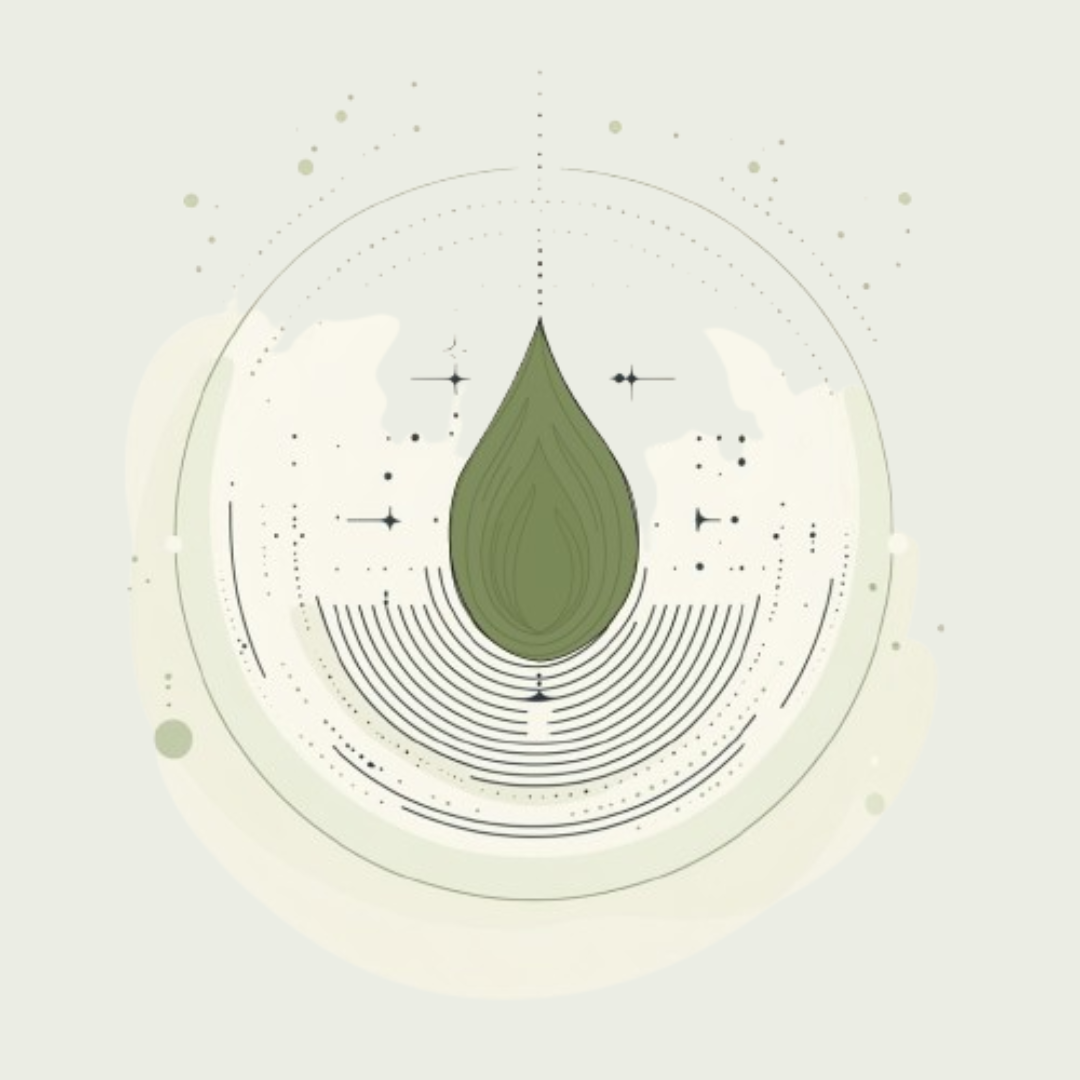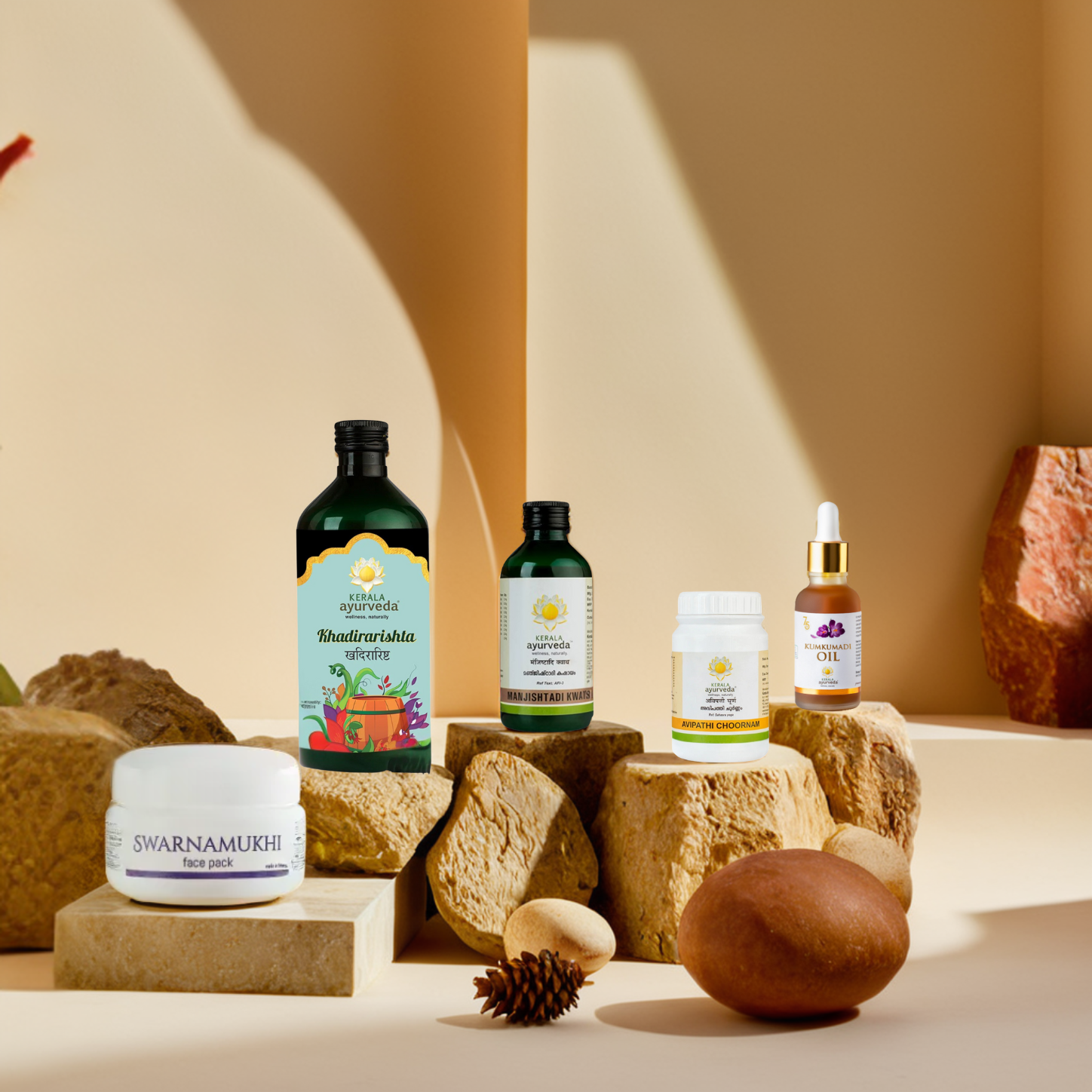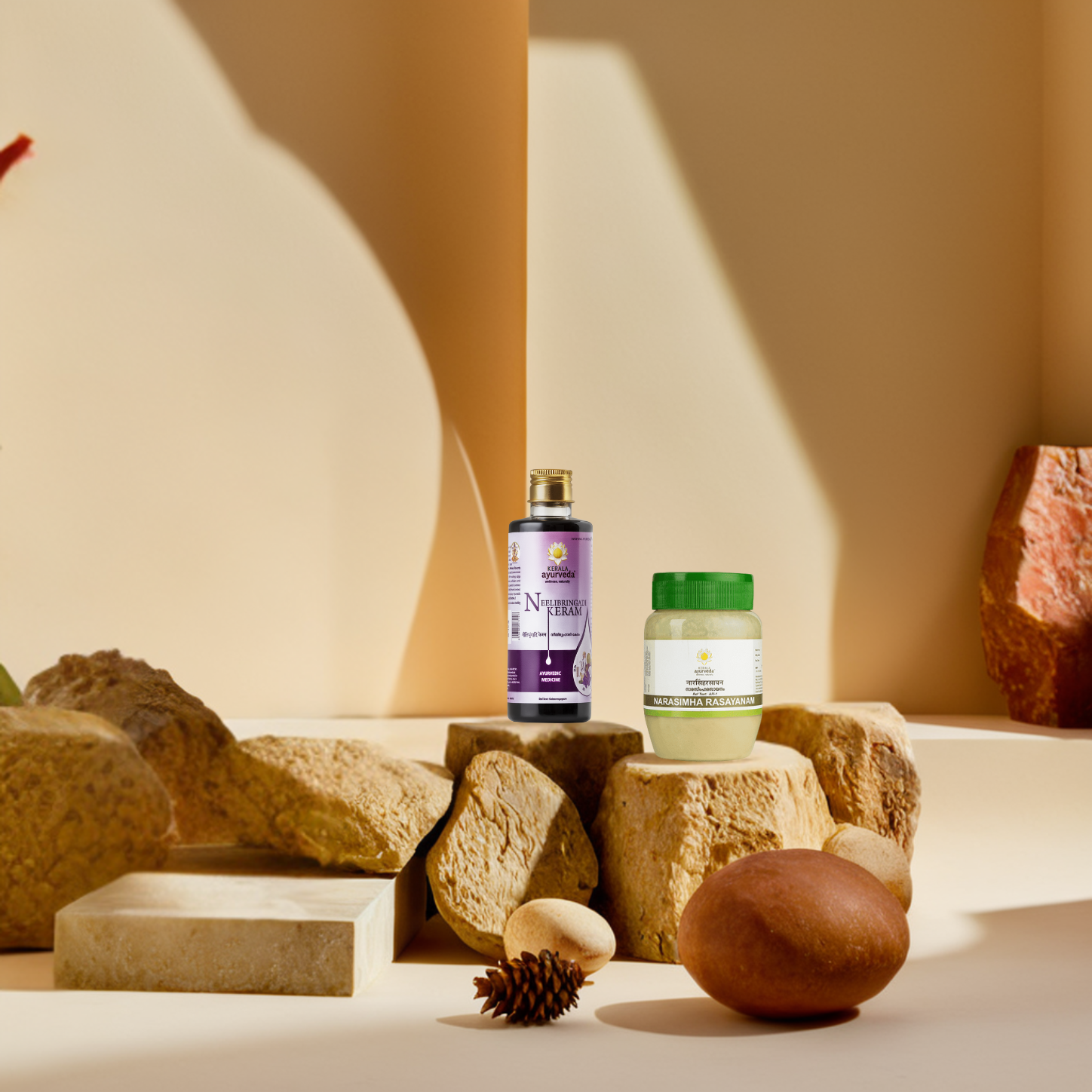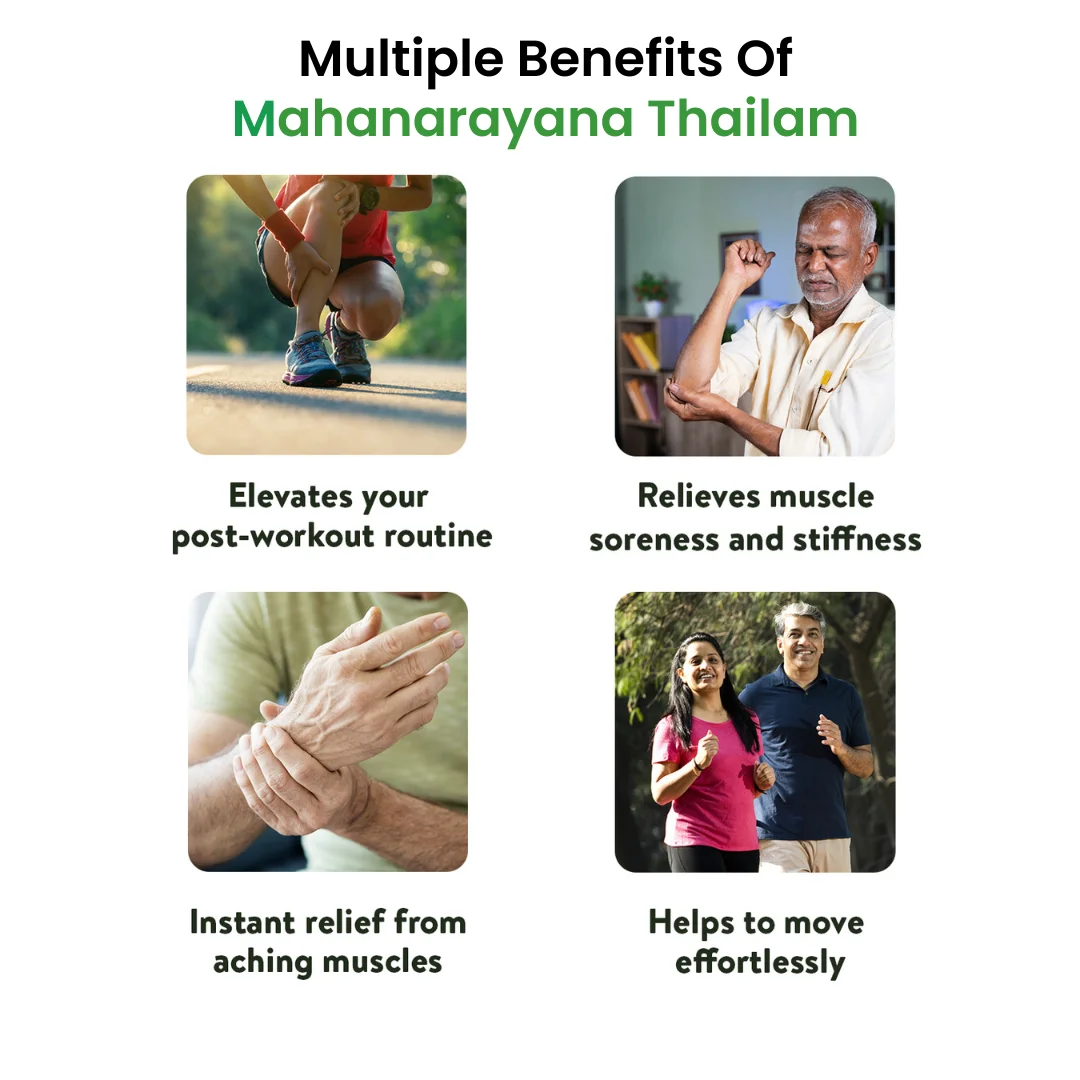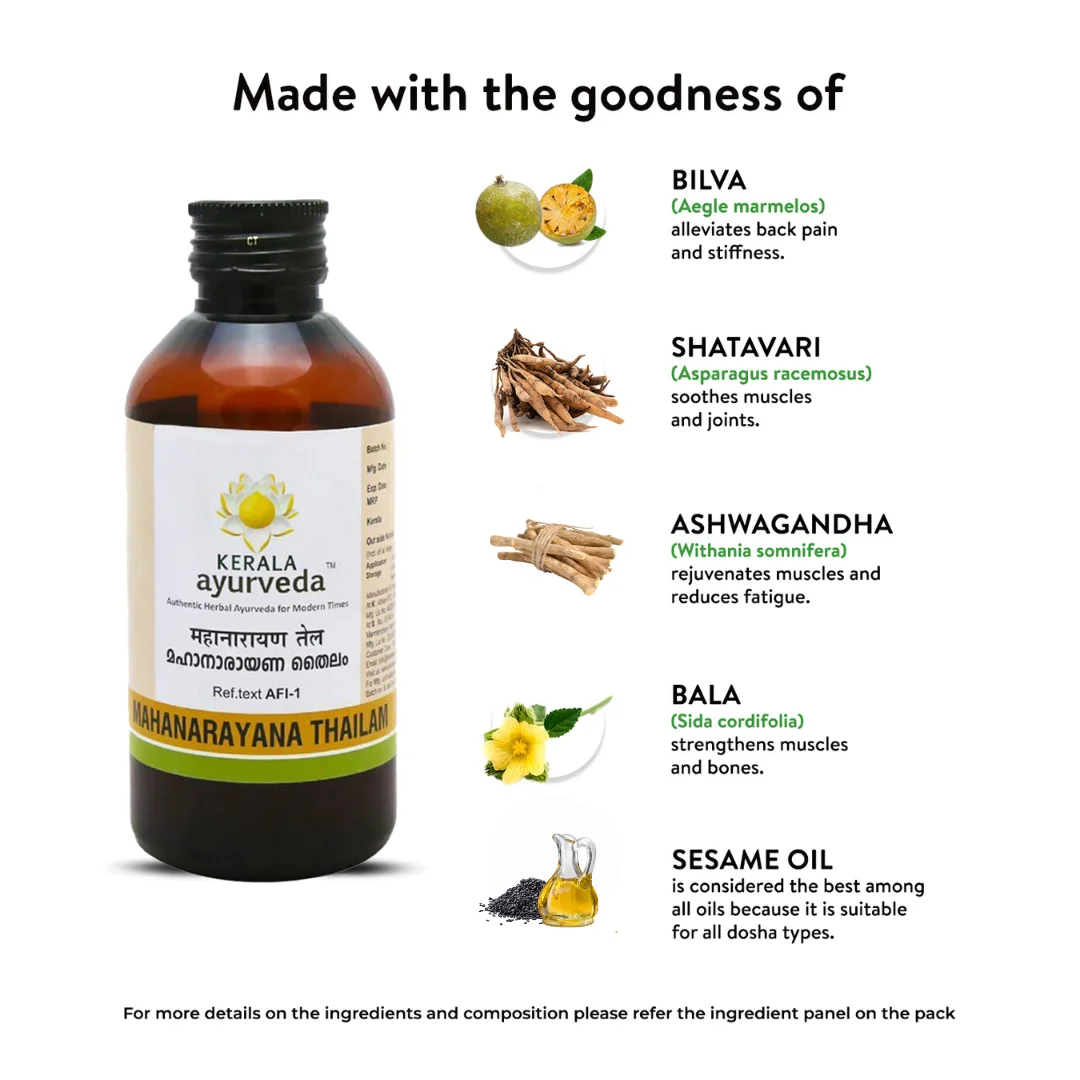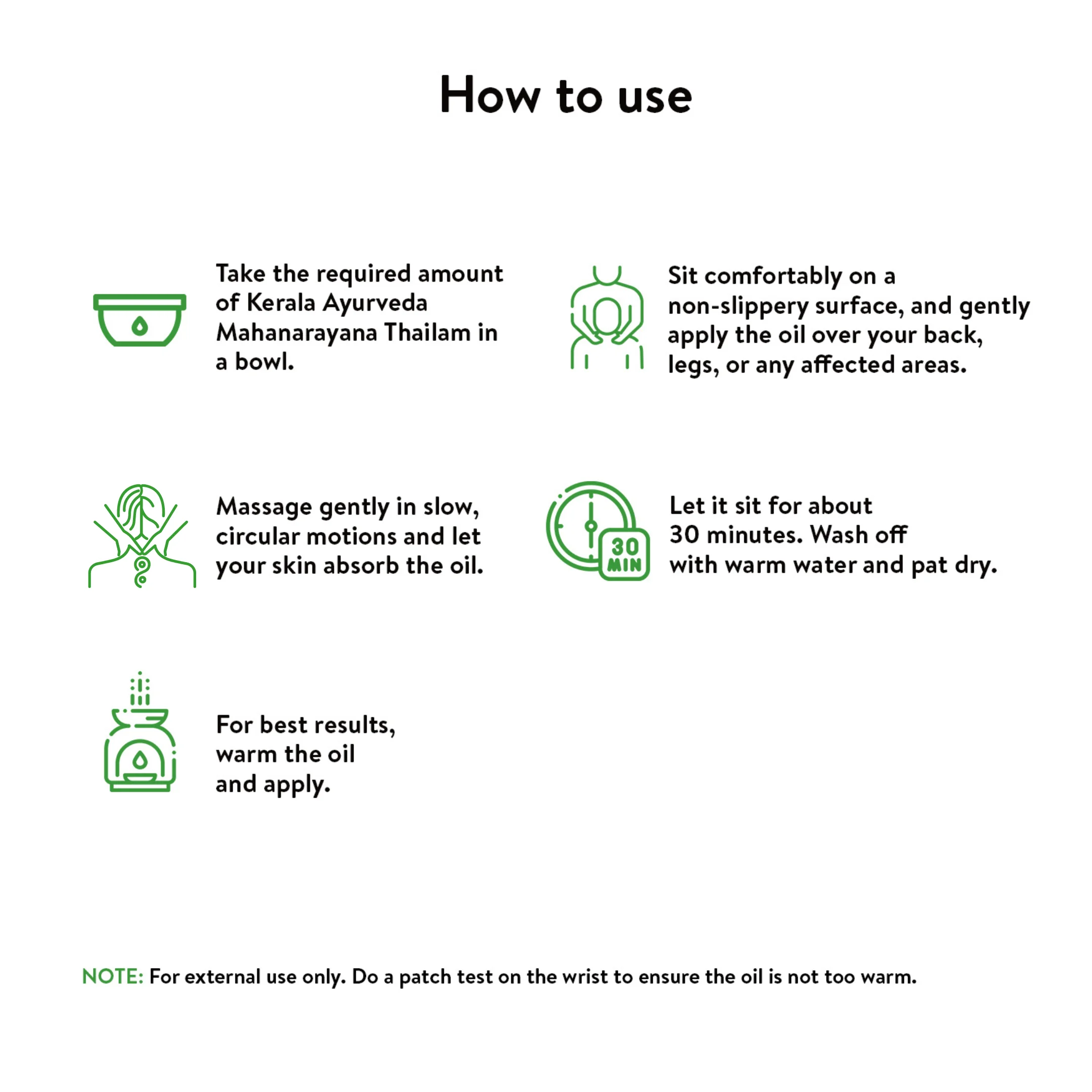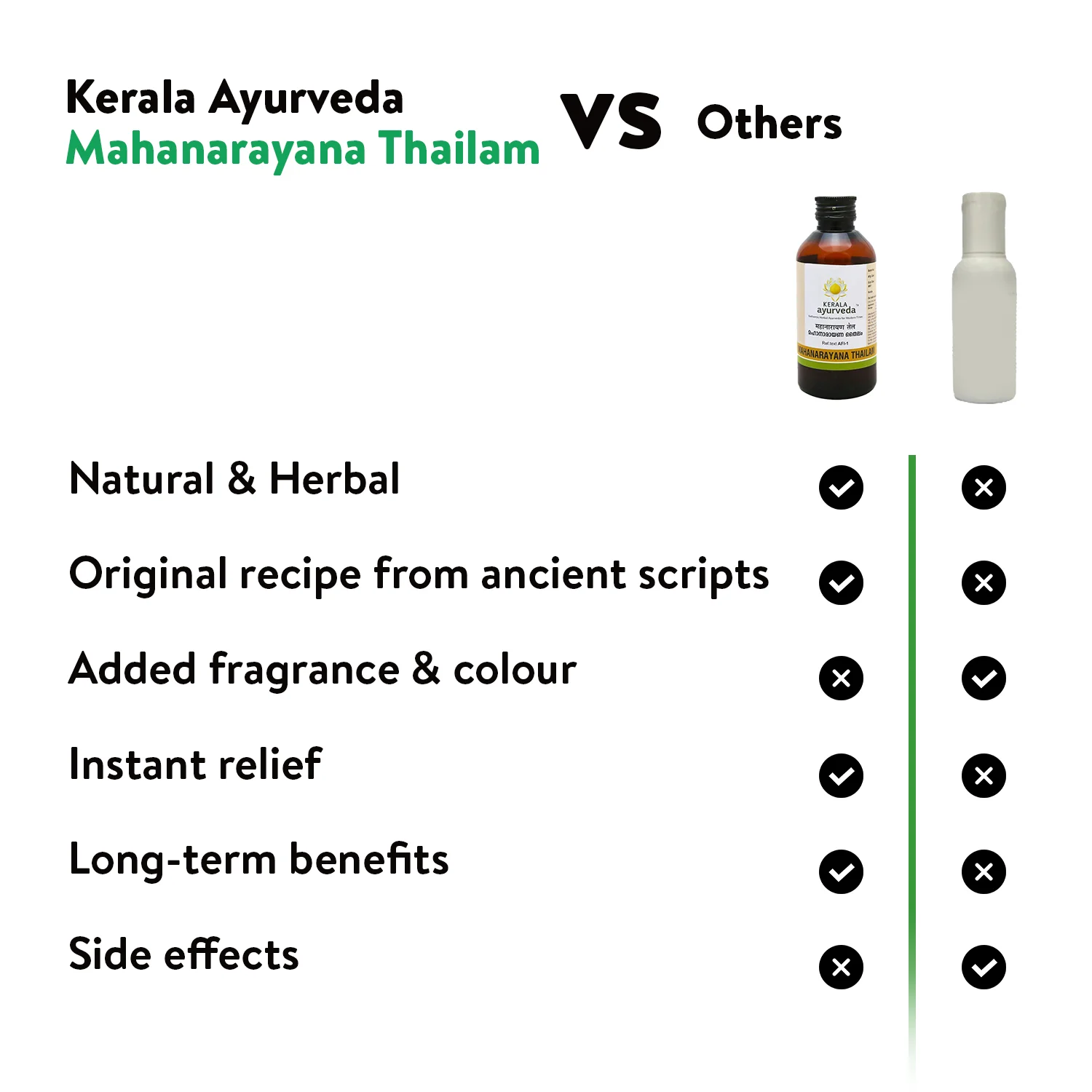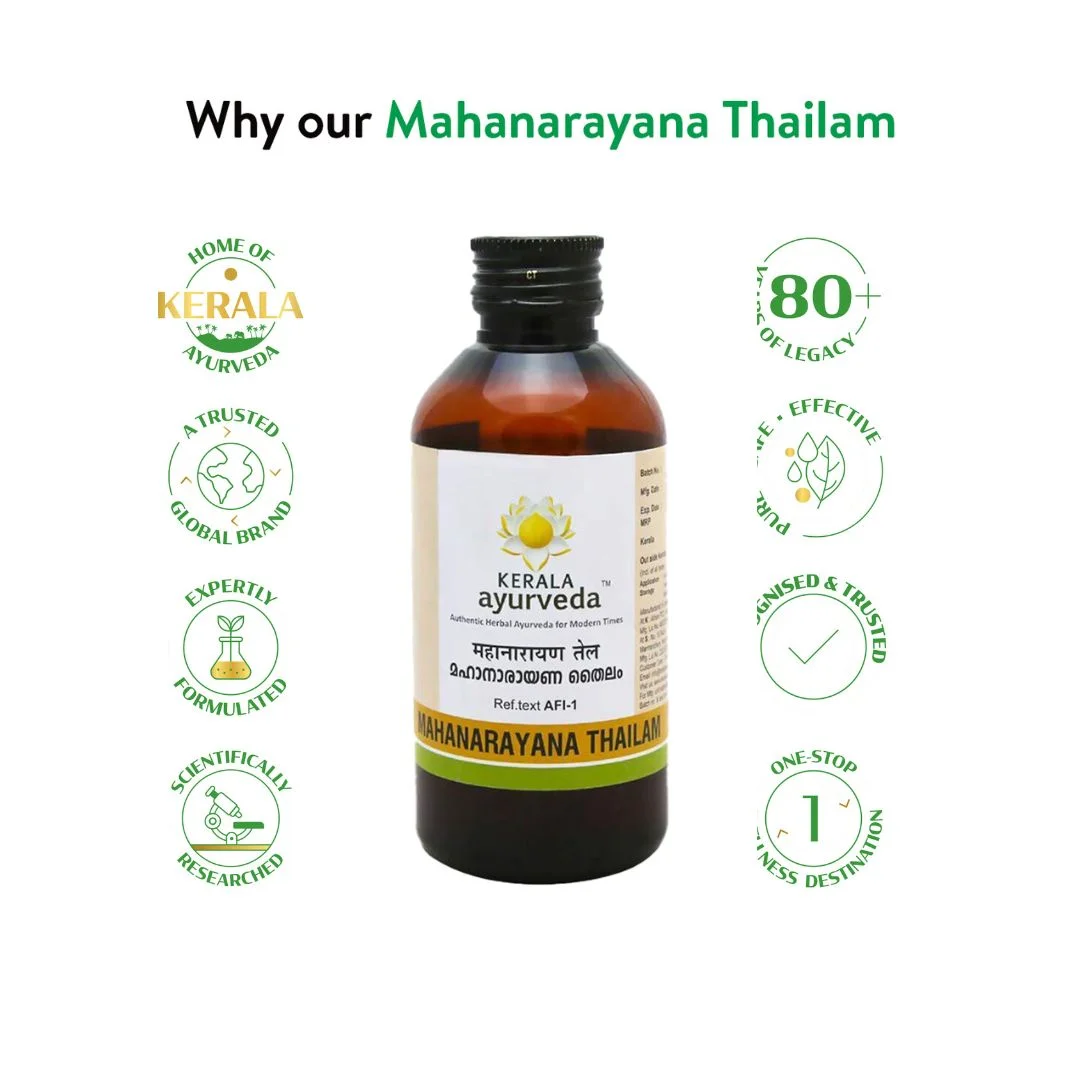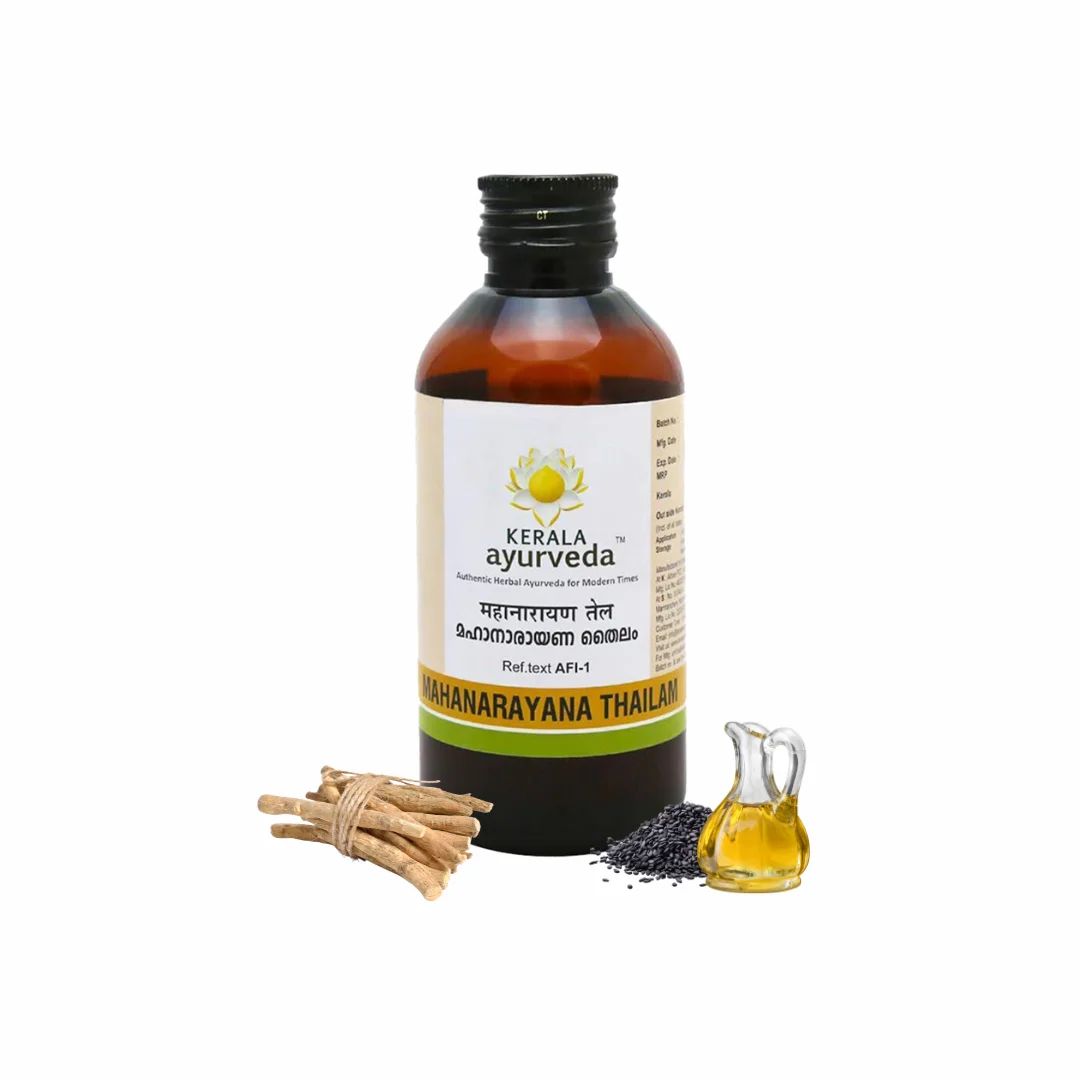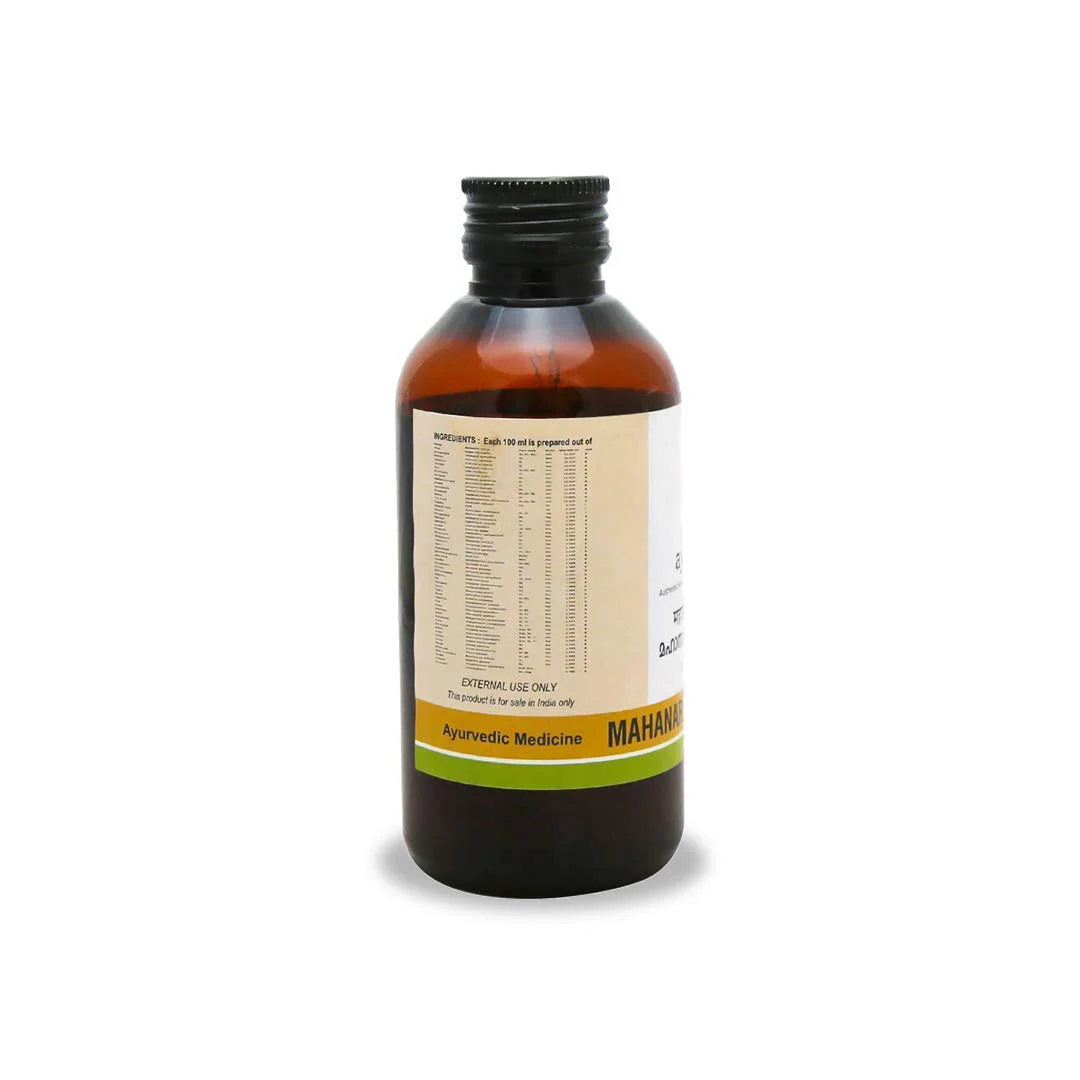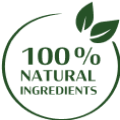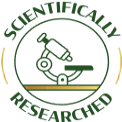Mahanarayana Thailam (Oil)
Delivery within 2 to 4 days
Country of Origin: India
A traditional Ayurvedic formulation for post-work soreness. Kerala Ayurveda Mahanarayana thailam strengthens and rejuvenates the muscles providing relief from workout pains. The oil is also ideal for the elderly to aid relief from pain and aches and muscle stiffness, helping them to move effortlessly.
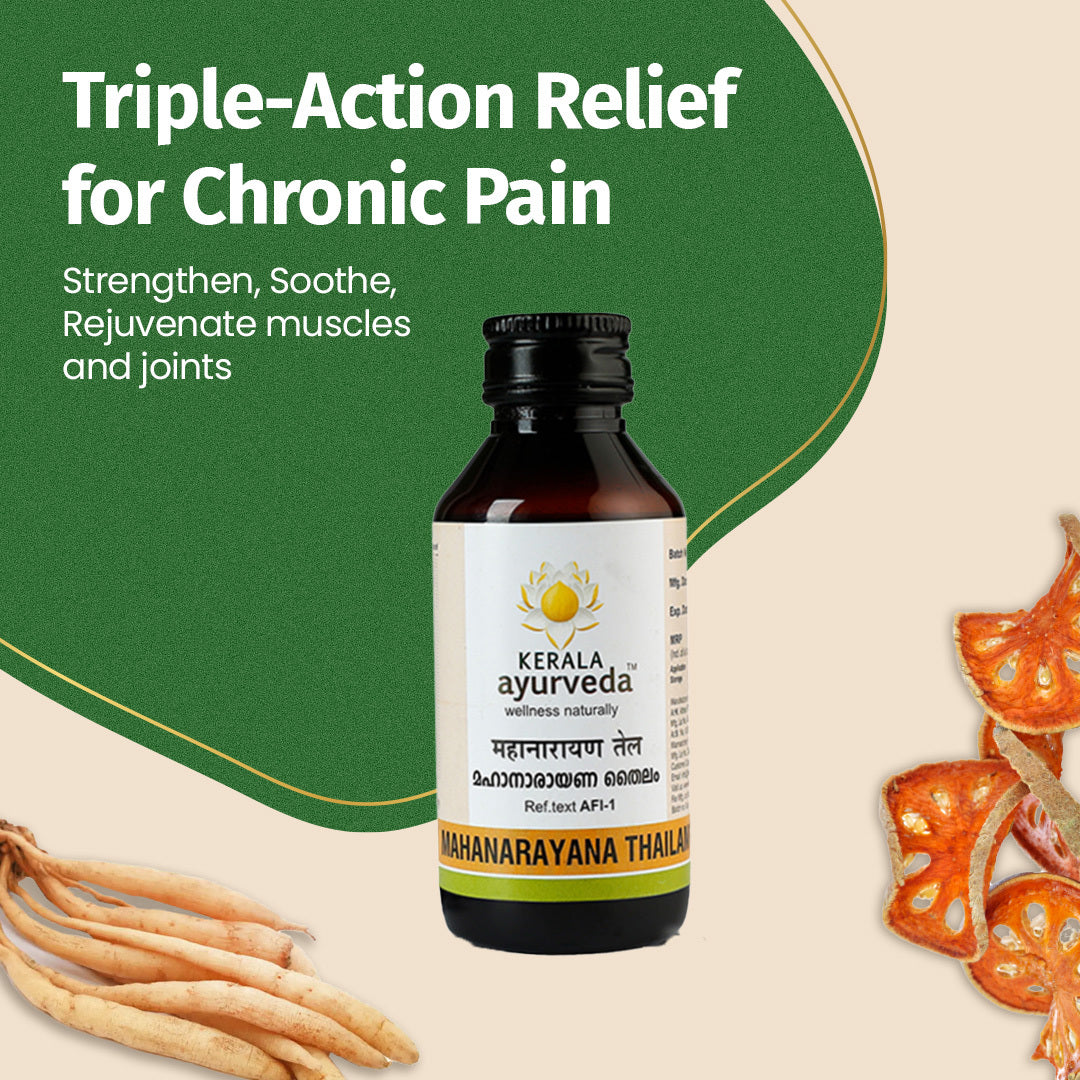
Key Benefits
Ingredients
How to Use?
- Manufactured by: Kerala Ayurveda Limited, Athani Post, Aluva, Ernakulam District, Kerala – 683585, India
- For Queries, Contact: Customer Care: 1800 103 5790; Address: Athani Post, Ernakulam District, Kerala - 683585, India; E-mail: customercare@keralaayurveda.biz
Is this safe for massaging babies?
Mahanarayana Thailam is suitable for adults dealing with joint stiffness and joint pain. Apart from that, it is helpful for those seeking relief from post-workout muscle soreness and stronger muscles. Due to these specific benefits, Mahanarayana Thailam is not recommended for massaging babies.
What are the benefits of this oil?
Primarily, this oil helps relax sore muscles after prolonged workout or Yoga sessions. It is a self-massage (Abhyanga) oil that can help relax pain and stiffness in joints and muscles.
How to use this oil to get the best results?
The usage steps for this oil have been recommended in the 'How to Use' section on this page.
I don't have the time to do Abhyanga or oil massage every day. What should I do?
Ayurveda often suggests that if you don’t have the time to go through a relaxing procedure, it makes a significant reason to go through that procedure, as it may help relax your body and mind for more productivity. Abhyanga is a relaxing massage procedure which should be done thoroughly. Try to take 15 minutes out, 30 minutes before taking a shower, and do a full body massage with Mahanarayana Thailam. You may soon start feeling more strength and less muscular fatigue. If this still seems difficult, you can do an Abhyanga massage twice a week.
How is this oil different from Myaxyl oil and Dhanwantharam oil?
Myaxyl is a knee pain oil offering fast relief. It’s considered good for sprains and spasms. Dhanwantharam Thailam is used as a pre and postnatal care oil and as a complete nourishment oil. Mahanarayana Thailam is different from both as it is generally used as a post-workout oil which offers relief from muscle and joint pain and stiffness.


